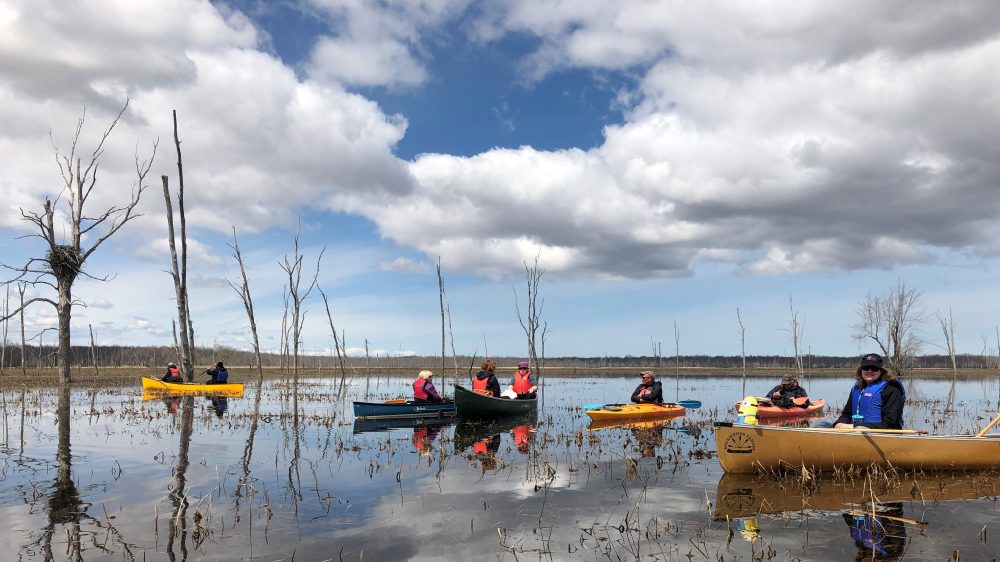Evidence exists to show that humans were present in Canada as early as 10 000 BC, with some historians setting the date back even farther to 40 000 BC. Archeological evidence collected to date has shown us that humans started to impact this wetland starting at around 2000 BC. Rich in natural resources, the wetlands and surrounding area became a mainstay for an increasing native population. Several historic fishing & hunting camps and permanent villages have been discovered and pottery, stone axes, pipes and flint fragments along with the bones of fish, deer and beaver have been recovered and documented. One well documented site found on the eastern periphery of the wetlands is known as a fine example of an Iroquoian Middleport agricultural settlement that dates to 1300 AD.
There were nine principal tribes in Southeastern Ontario who spoke languages within the Iroquoian language family. The Wendat lived in the region between Lake Simcoe and Georgian Bay, which includes the Minesing Wetlands area. The Wendat were primarily farmers and established permanent villages on the loamy uplands surround the wetlands. Corn, beans and squash, or the “three sisters” as they were called, were the basis of their daily diet. The Wendat would have utilized the Minesing Wetlands for hunting and fishing. Trading missions exchanged goods with their allies, including Beaver pelts, which were used to supply the French fur trade. After losing 2/3 of their population to smallpox and other European-borne diseases the Wendat were defeated and scattered by the Iroquois in 1649.
During the War of 1812, the wetlands took on an important role in military strategy. When the British were defeated on Lake Erie, an alternative route to transport supplies and troops to the Upper Great Lakes and Fort Michilimackinac was put in place. The route was established on an historic First Nation and fur trading route and became known as the “Nine Mile Portage”. This trail originated in Barrie on the shores of Kempenfelt Bay and led to a promontory that overlooks the Minesing Wetlands, before descending into the lower wetland and eventually intersecting with the Willow Creek. It was here on the promontory that a military post and depot called “Fort Willow” was established and became an integral part of the War of 1812.
For years after the conclusion of the War, the wetlands via the Nine Mile Portage played host to many recognizable Canadian figures including David Thompson during his survey of the American/Canadian border, and the Franklin Expedition on their way northward to the Arctic.
Pioneer settlement began in the mid 1800’s. The drainage and type of soil present usually determined which of the lots were settled first. Generally settlers had no interest, tools or knowledge of working in the organic, heavy soils of the wetlands, and most of the “wild lands” were held by absentee speculators. The fringe lands on the perimeter of the wettest areas were prized for use as pasture and as a source of firewood. Lumber barons, railway builders and settlers intent on clearing the land for agricultural purposes, made for busy times in Simcoe County and today you can still find the traces of our pioneering ancestors in roads, fields, bridges, ruins, drainage works and names within and adjacent to the wetland’s boundaries. The 20th century saw us still relying on this wetland for food, warmth, economics and recreation.
We also started to look at the wetlands differently, more aware and conscientious of its values and benefits. This attitude has carried on into the 21st century and as such we can only hope that Minesing Wetlands will continue to receive the recognition it deserves for generations to come.
